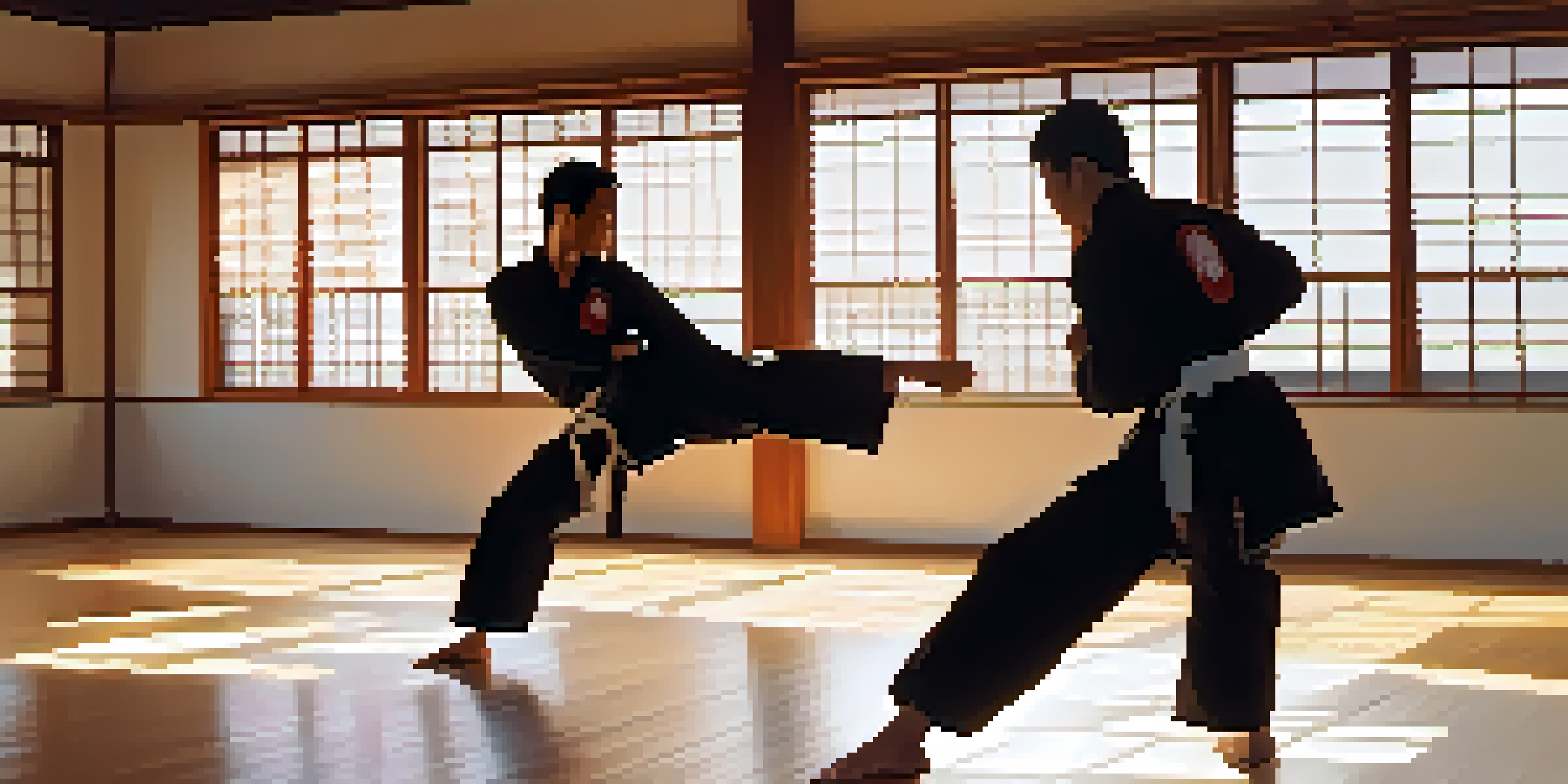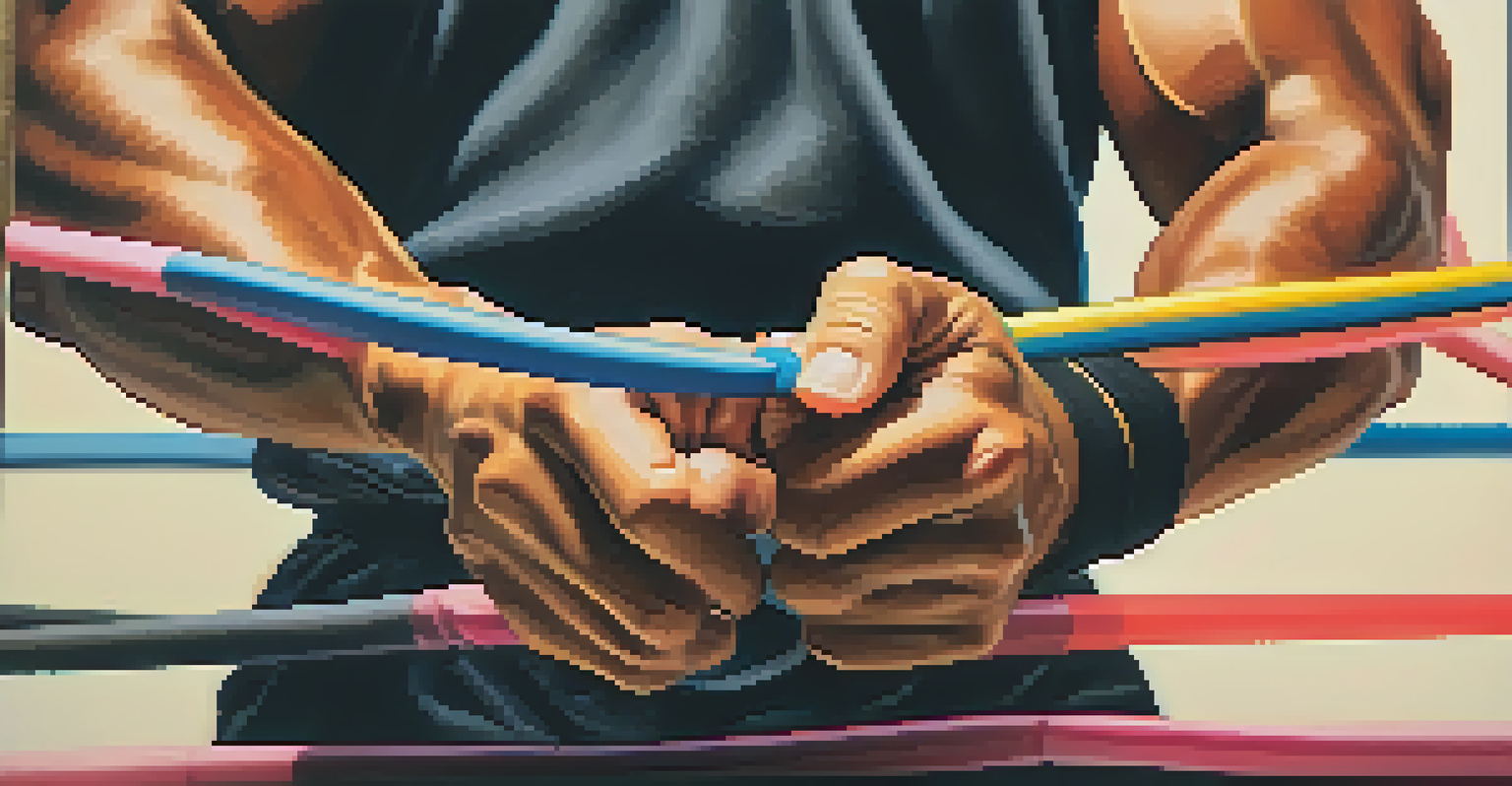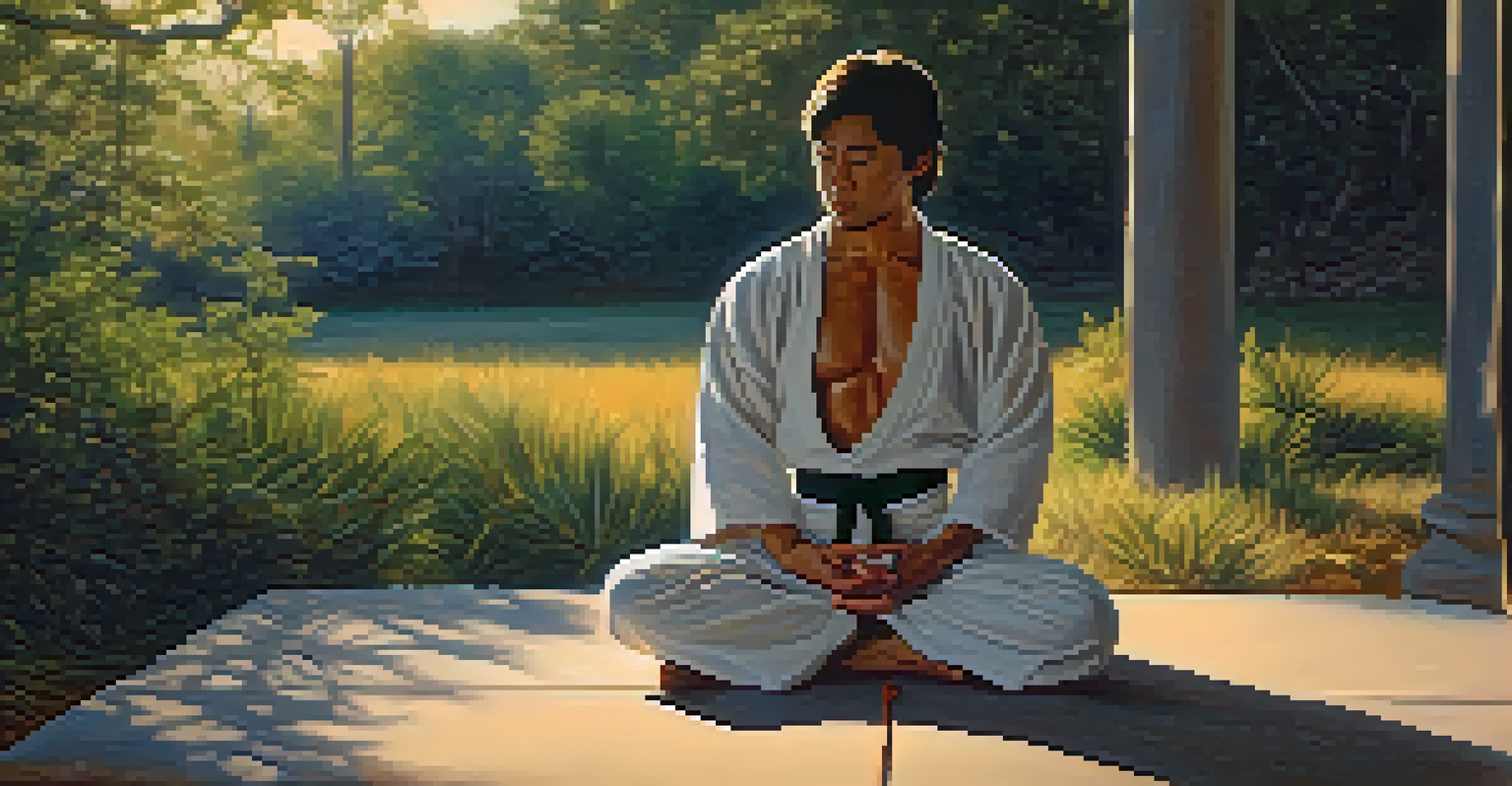Mobility and Strength Training Through Martial Arts

Understanding Mobility and Strength in Martial Arts
Mobility and strength are crucial components in martial arts, working together to enhance performance. Mobility refers to the ability to move freely and easily, while strength is about the muscle power you can exert. In martial arts, having a good balance of both can give you an edge in executing techniques efficiently and effectively.
Strength does not come from physical capacity. It comes from an indomitable will.
Think of mobility as the oil in a well-functioning machine; without it, everything becomes stiff and inefficient. When you practice martial arts, you're not just learning to punch or kick; you're training your body to move fluidly in various directions. This dynamic movement is key to both defensive and offensive techniques in any martial art.
Moreover, strength training through martial arts isn't just about lifting weights. It involves using your body weight, resistance, and repetitive motions to build muscle. This unique blend of mobility and strength training can lead to improved overall fitness, making martial arts an excellent choice for anyone looking to enhance their physical capabilities.
The Role of Flexibility in Martial Arts Training
Flexibility plays a vital role in enhancing both mobility and strength in martial arts. It allows for greater range of motion, which is essential for executing complex movements and techniques. When you're flexible, you're less likely to experience injuries and can perform at your peak during training and competitions.

To illustrate, think of a rubber band; the more you stretch it, the more versatile it becomes. Similarly, when you incorporate flexibility training into your martial arts routine, you empower your body to adapt to various movements. This adaptability is crucial when you're sparring or performing techniques that require quick changes in direction.
Mobility Enhances Martial Arts Skills
Mobility is essential for executing techniques fluidly and effectively in martial arts.
Incorporating stretching routines and dynamic warm-ups can significantly improve your flexibility. Many martial arts schools emphasize this aspect, ensuring students develop not just strength but also the ability to move their bodies freely. As you progress, you'll notice a remarkable improvement in your overall performance and a reduction in muscle stiffness.
Building Strength Through Bodyweight Exercises
One of the most effective ways to build strength in martial arts is through bodyweight exercises. These include push-ups, squats, and lunges, which enhance muscle strength while also improving balance and coordination. The beauty of bodyweight training is that it can be done anywhere and requires no equipment.
The mind is everything. What you think you become.
Imagine performing a push-up; not only are you working your chest and arms, but you're also engaging your core and legs to maintain stability. This holistic approach to strength training is beneficial for martial artists, as it mimics the functional movements used in various techniques. As you progress, you can increase the intensity by adding variations, making your workouts more challenging.
Additionally, bodyweight exercises promote muscular endurance, which is essential for martial artists during long training sessions or competitions. By regularly incorporating these exercises into your routine, you’ll notice not only an increase in strength but also an improvement in your overall performance on the mat.
Incorporating Resistance Training for Enhanced Performance
While bodyweight exercises are fantastic, incorporating resistance training can take your strength to the next level. Resistance training involves using weights or resistance bands to build muscle and increase strength. This method allows for targeted muscle training, which is particularly useful for martial artists who need specific strength for various techniques.
For instance, using resistance bands during kicks can help build the muscle groups used in those movements, making them stronger and more explosive. This targeted training method not only helps in martial arts but also enhances overall athletic performance. You can think of it as fine-tuning your engine to maximize efficiency.
Strength Training Builds Performance
Incorporating bodyweight and resistance exercises helps to build muscle strength crucial for martial arts.
As you integrate resistance training into your martial arts routine, it's essential to focus on proper form and technique. This ensures that you’re not only building strength but also preventing injuries. By balancing resistance training with mobility work, you create a well-rounded approach that can significantly enhance your martial arts skills.
The Importance of Agility in Martial Arts
Agility is another key element that complements mobility and strength in martial arts. It refers to your ability to move quickly and easily, changing direction with precision. In martial arts, being agile allows you to evade attacks and respond swiftly to your opponent's movements.
Picture a cat; its ability to dart around and change direction in an instant is a prime example of agility in action. In martial arts, agility drills, such as ladder exercises and cone drills, can significantly improve your quickness and coordination. These drills prepare you to adapt to fast-paced environments, making you a more effective martial artist.
Incorporating agility training into your routine not only enhances your martial arts performance but also boosts your overall athleticism. It helps in developing a heightened sense of awareness and reaction time, which are critical in competitive settings. This combination of agility, mobility, and strength creates a formidable martial artist.
Mind-Body Connection: Mental Focus in Training
Martial arts training isn't just about physical strength; it also emphasizes the mind-body connection. Developing mental focus is crucial for executing techniques effectively and maintaining composure during training or competition. This mental aspect can enhance your physical performance, allowing you to harness your body's capabilities more efficiently.
Consider the concept of 'flow' in martial arts, where you become so engrossed in the movement that everything else fades away. This heightened state of awareness can lead to improved timing, precision, and overall execution of techniques. Practicing mindfulness through breathing exercises and meditation can help cultivate this connection.
Balanced Training Maximizes Benefits
A well-rounded training regimen that includes flexibility, strength, agility, and mental focus leads to better overall performance.
By fostering a strong mind-body connection, martial artists can improve their concentration and decision-making skills. This not only benefits their performance but also enhances their overall training experience. As you grow in your martial arts journey, remember that mental strength is just as important as physical strength.
Creating a Balanced Training Regimen
To maximize the benefits of martial arts training for mobility and strength, it's essential to create a balanced regimen. This means incorporating various elements such as flexibility, strength, agility, and mental focus into your routine. By diversifying your training, you ensure that all aspects of your physical and mental capabilities are being developed.
Think of it as a well-rounded diet; if you focus solely on one food group, you may miss out on essential nutrients. Similarly, a balanced training regimen allows your body to grow stronger and more flexible while enhancing your overall performance. This holistic approach can lead to better results and a more enjoyable training experience.

It's also important to listen to your body and adjust your training as needed. Incorporating rest and recovery days into your routine allows your muscles to heal and grow. By striking this balance, you’ll be well on your way to becoming a more skilled and capable martial artist.